Your online store might be losing sales right now. Many store owners make critical BigCommerce SEO mistakes without knowing it. The numbers tell a shocking story – 70% of shoppers abandon their carts on ecommerce sites. Think about that: seven out of ten potential customers leave without buying anything.
The challenges don’t stop there. Research shows that 56% of consumers want businesses to understand their needs better. Another 51% feel overwhelmed by irrelevant content from brands. Reviews matter too – 76% of customers won’t buy from stores that lack them. These facts show why successful businesses team up with BigCommerce SEO companies and invest in specialized services. A solid eCommerce SEO link-building strategy helps you avoid mistakes that send customers running.
Let’s get into 18 common ecommerce mistakes that could be hurting your sales. The real question is: how many are you making?
18 Common Ecommerce Mistakes to Avoid: How Many Are You Making?
2. Failing to Define Your Target Audience
3. Pricing Products Without Research
4. Choosing the Wrong Ecommerce Platform
5. Not Investing in Website Security
6. Building a Custom CMS from Scratch
7. Using Poor Product Photography
8. Lackluster Product Descriptions
10. Overloading Product Pages with Media
11. No Product Categories or Filters
12. Missing Contact and Service Info
15. Copying Competitor Content
16. Not Using Analytics to Improve Marketing
- Not Doing Market Research
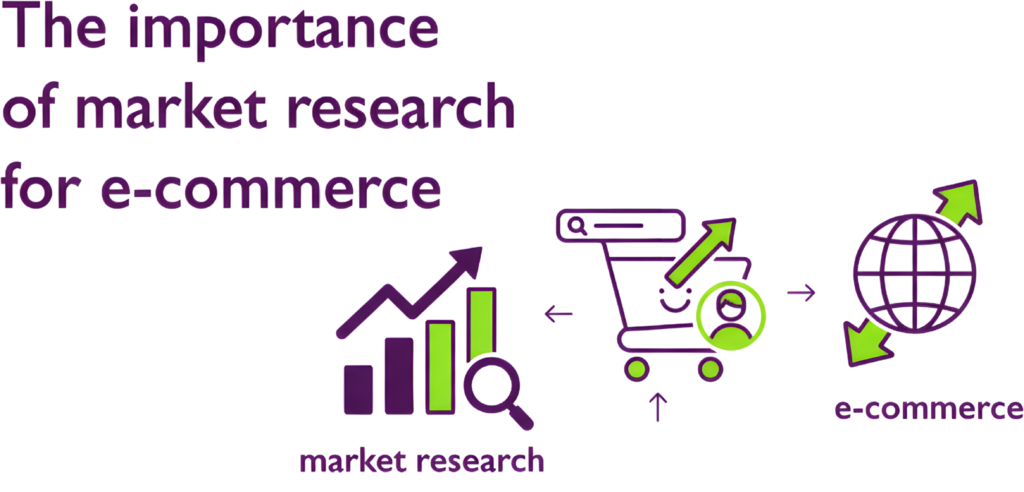
Market research serves as the foundation of any successful ecommerce venture. Many online store owners skip this significant step. Studies show that up to 90% of ecommerce startups fail because they don’t do proper market research before launching their BigCommerce stores.
Business owners often chase market trends or try to build “the next Amazon.” They don’t analyze if people actually want their products. This strategy might work short term, but ultimately guides them to failure. Target’s expansion into Canada proves this point. The retail giant relied on brand recognition alone and skipped market research. The result? They had to retreat from the Canadian market in less than two years, and it got pricey.
A full picture gives you analytical insights about:
- Market size and product demand
- Economic indicators, including customer income ranges
- Target customers’ geographic location
- Market saturation levels
- Competitive pricing strategies
- Customer shopping priorities
You’re flying blind without these insights. JCPenney learned this lesson harshly. They cut out sales and coupons, thinking customers were tired of them. Sales dropped because JCPenney’s customers actually loved their coupons and sales events.
Skipping research stops you from seeing your competitive advantages. Companies that know their strengths and their competitors’ weaknesses make smarter decisions with less risk. You also miss chances to develop marketing models that appeal to your target audience.
Don’t assume what customers want. Good BigCommerce SEO services include market research to arrange your ecommerce strategy with real customer behavior. This foundation helps optimize your site structure, content, and overall BigCommerce SEO approach to maximize visibility and conversion.
- Failing to Define Your Target Audience
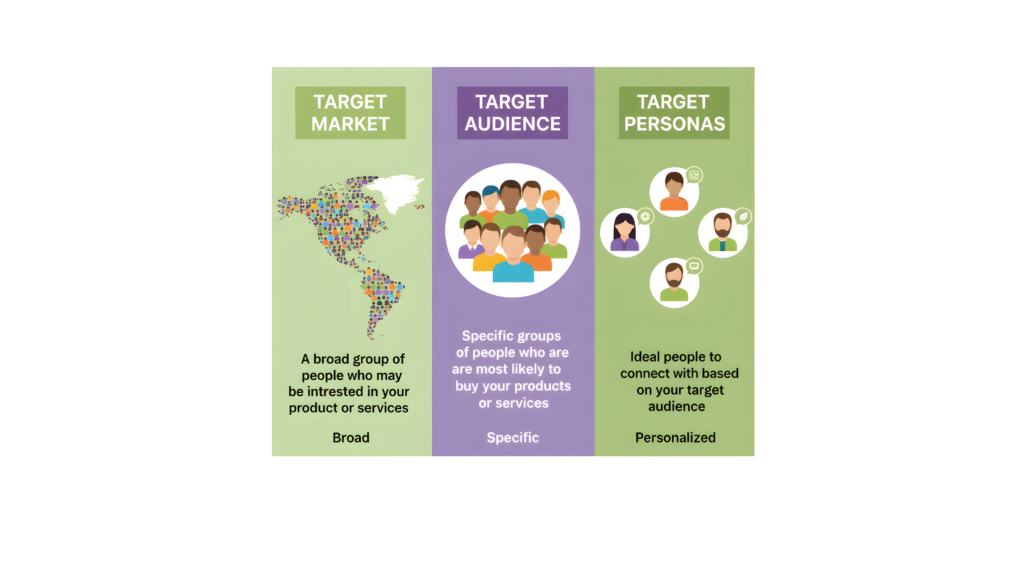
Many ecommerce ventures make one classic mistake – they try to appeal to everyone. Your marketing efforts will miss the mark if your target audience is “pretty much everybody.” This approach reduces your chances of boosting conversions by a lot.
Nobody identifies with “everybody.” Yet industry reports show a shocking fact: 68% of consumers expect all experiences to be personalized. A disconnect exists because only 42% of marketers know their audience’s demographic information. Less than half understand their interests and hobbies.
This explains the high abandonment rates on ecommerce sites. Right now, 98% of visitors who land on an ecommerce store leave without buying anything. User experience issues often create friction that drives potential customers away.
The issue goes deeper. About 56% of consumers believe businesses should better understand their needs. Another 51% feel brands overwhelm them with irrelevant content. These numbers reveal a great chance – you can distinguish your store by being one of the few that truly get what customers want.
Marketing your brand without proper audience segmentation is like casting a wide net into the sea and hoping to catch something. However, careful segmentation lets you:
- Create custom offers and individual-specific experiences
- Target marketing efforts to specific groups
- Send relevant content to the right audience
- Adjust products and strategies as demands change
- Better predict future buying patterns
- Focus resources on high-value customers effectively
The foundation of any successful business is knowing your customers. Research about your existing customers helps you learn who your brand and products strike a chord with. These insights help you tailor your BigCommerce store to your audience’s specific needs, which ends up improving conversions and maximizing your BigCommerce SEO efforts.
- Pricing Products Without Research
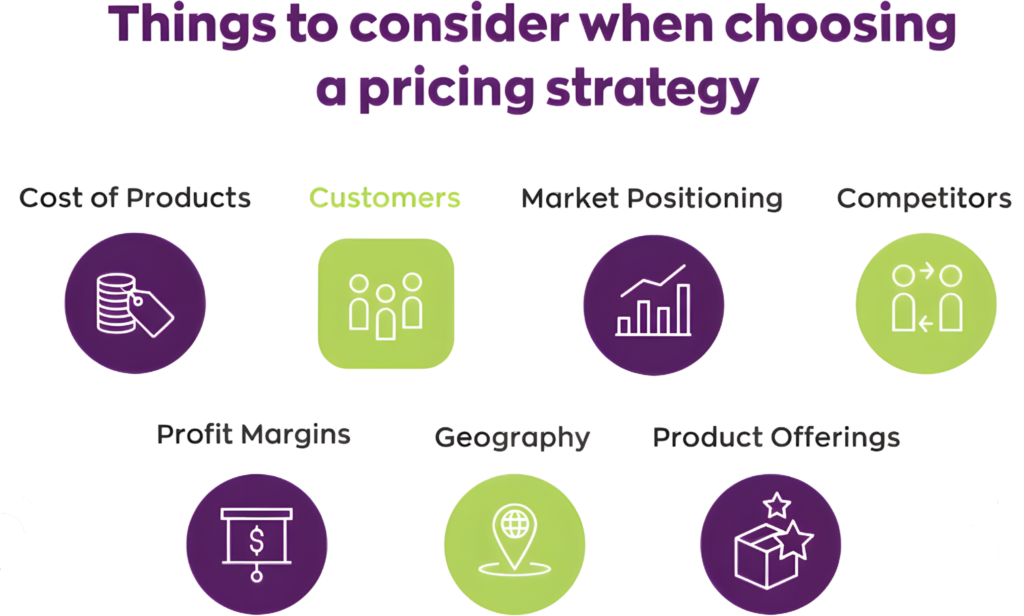
Pricing strategy plays a crucial role in your ecommerce success, but many store owners guess instead of doing research. Over 60% of shoppers claim price is the leading factor in their purchase decisions. This number rises to almost 80% during economic hardship. The wrong price can devastate your business in several ways.
High product prices lead to abandoned carts and lost sales. Low prices cut into profit margins and might hurt your brand’s reputation long-term. This balance makes proper pricing research essential for success.
Many businesses make the mistake of treating all customers the same way. Different customer segments have unique price sensitivities and value thresholds. Your results improve when you segment your audience and create specific pricing strategies for each group.
There’s another reason to be careful – ignoring competitor pricing. Customers rarely buy items they think are overpriced compared to alternatives. Matching competitors blindly without looking at your unique value or costs can be just as harmful.
Many businesses still trust their gut instead of data for pricing decisions. This rarely works in today’s complex marketplace, where evidence-based pricing strategies perform better than intuition.
A BigCommerce SEO company can help you avoid these mistakes with detailed market analysis. Professional BigCommerce SEO services help you create evidence-based pricing strategies that boost conversions and profits. eCommerce SEO, link building, and analytics give you the knowledge to position your products effectively in the marketplace.
- Choosing the Wrong Ecommerce Platform
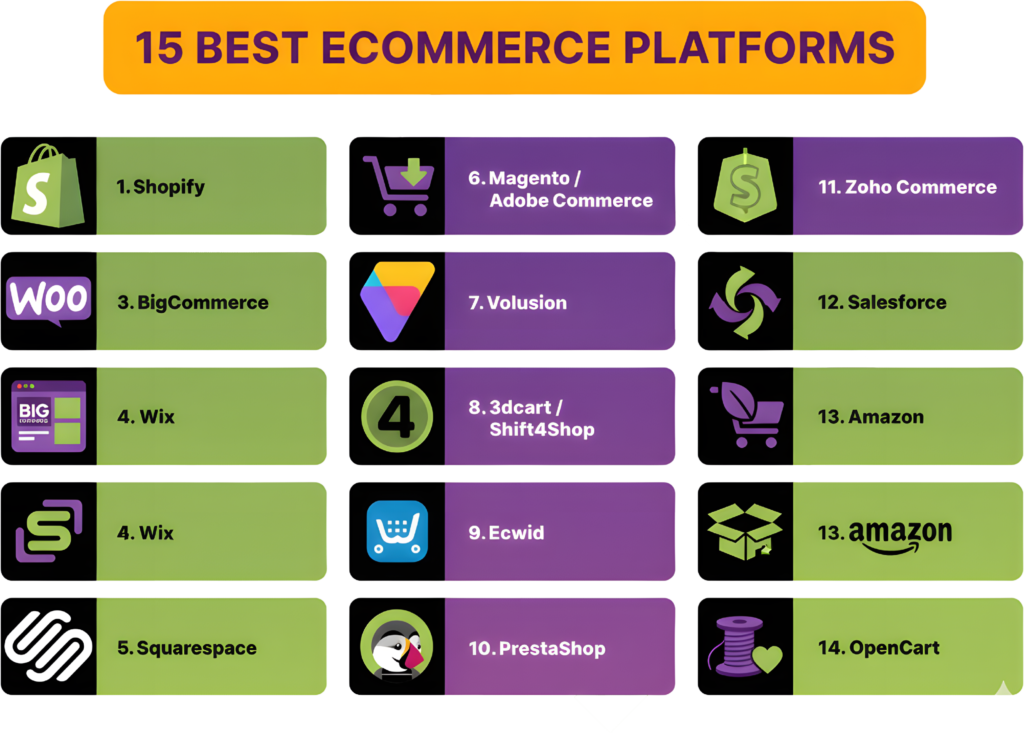
Your online business success largely depends on your ecommerce platform choice. Many store owners rush this significant decision and end up finding that the wrong platform holds back growth and gets pricey.
Poor platform choices create lasting problems. Platforms that lack scalability often break down with higher traffic, which ruins the user experience. Your business growth stalls with a platform that can’t keep up, resulting in missed sales and unhappy customers.
Unexpected costs can catch you off guard. The original pricing might look good, but many platforms add transaction fees, maintenance costs, or require expensive add-ons to work properly. Some platforms need big investments to upgrade or customize as your business evolves.
Your platform’s ability to work with other systems is vital. It should connect smoothly with inventory management, customer service, and payment systems. Poor integration creates inefficiencies that hurt customer experience and drain your resources.
To name just one example, see these key factors:
- Scalability to grow
- True ownership cost beyond monthly fees
- System integration capabilities
- Custom options for your needs
- Security and compliance features
Research shows businesses face disruptions and financial problems without proper platform selection guidance. That’s why successful ecommerce businesses team up with a specialized BigCommerce SEO company to avoid common BigCommerce SEO mistakes.
Professional BigCommerce SEO services help ensure your platform supports current needs and future growth, which helps you avoid costly platform changes later.
- Not Investing in Website Security
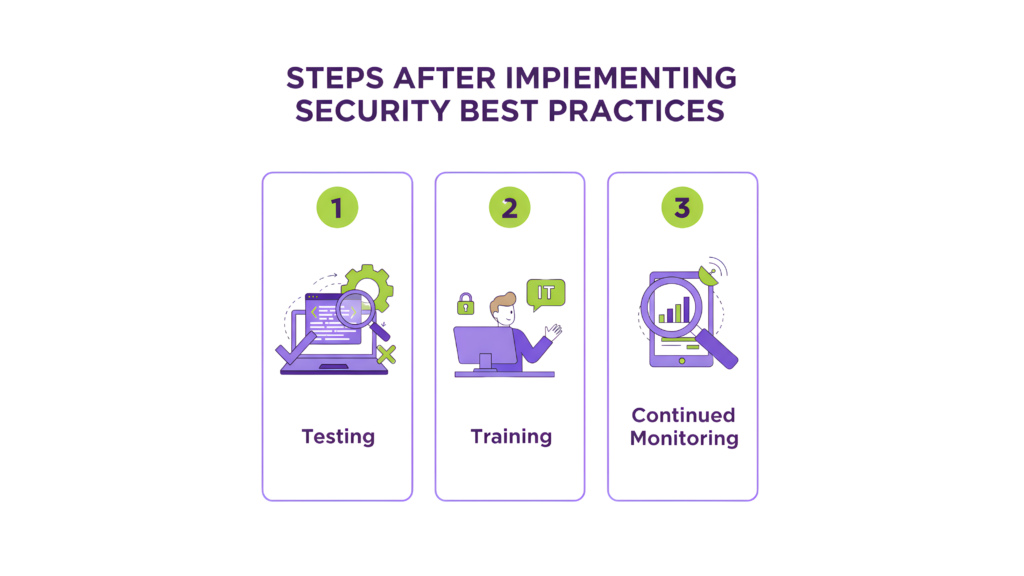
Security breaches can destroy your online store. The average cyberattack costs businesses about INR 119.82 million to recover. These numbers make website security essential to your ecommerce operation.
Cyberattacks target the ecommerce world at an alarming rate of 32.4%. Reports show that malicious requests make up 29% of website traffic. The situation looks even worse as 50% of small ecommerce store owners report more severe attacks.
Security failures damage more than your finances – they shatter customer trust. Your customers take data protection seriously. 87% of consumers would stop doing business with companies that fail to protect their data. A breach makes 59% of shoppers less likely to buy from affected businesses.
The damage spreads way beyond lost sales:
- Your business faces financial drain from investigations, legal fees, fines, and customer compensation
- Your reputation takes years to rebuild
- You risk legal and compliance problems with regulations like GDPR
- Business operations suffer across the board
Small businesses feel these security problems more than anyone else. Cybercriminals target small merchants in 90% of data breaches. The survival rate looks grim – almost 60% of small ecommerce stores hit by cybercrimes close within six months.
You need website security to survive, not just protect your business. BigCommerce SEO services can help set up strong security measures among other optimization strategies that protect your customers and business’s future.
- Building a Custom CMS from Scratch
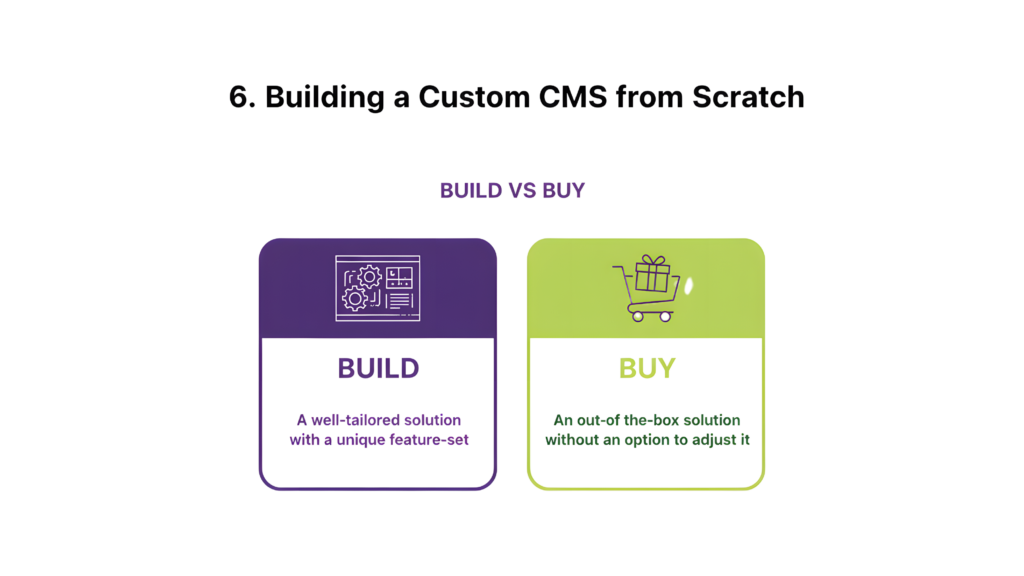
Building a content management system from scratch is one of the most expensive ecommerce mistakes you can make. Most businesses don’t need a custom CMS unless they have very specific requirements that only a custom solution can address.
A custom CMS comes with hefty resource requirements:
- Development costs starting at INR 2,531,413
- Development timelines stretching from 3-10 months
- Ongoing maintenance and technical support
You might want something built exactly to your specifications. However, this approach only makes sense for large enterprises that can’t use standard platforms.
The truth is simple. Small businesses rarely need such extensive customization. Many ecommerce entrepreneurs waste their resources by rebuilding features that existing platforms already offer.
Custom development needs a team of experts – skilled back-end and front-end developers, database specialists, and UX designers. You’ll also need dedicated teams to handle security, maintenance, and updates.
Most businesses can get all the customization they need from 3-year-old ecommerce platforms without excessive costs. A BigCommerce SEO company can provide the customization you need while helping you avoid this expensive BigCommerce SEO mistakes.
- Using Poor Product Photography
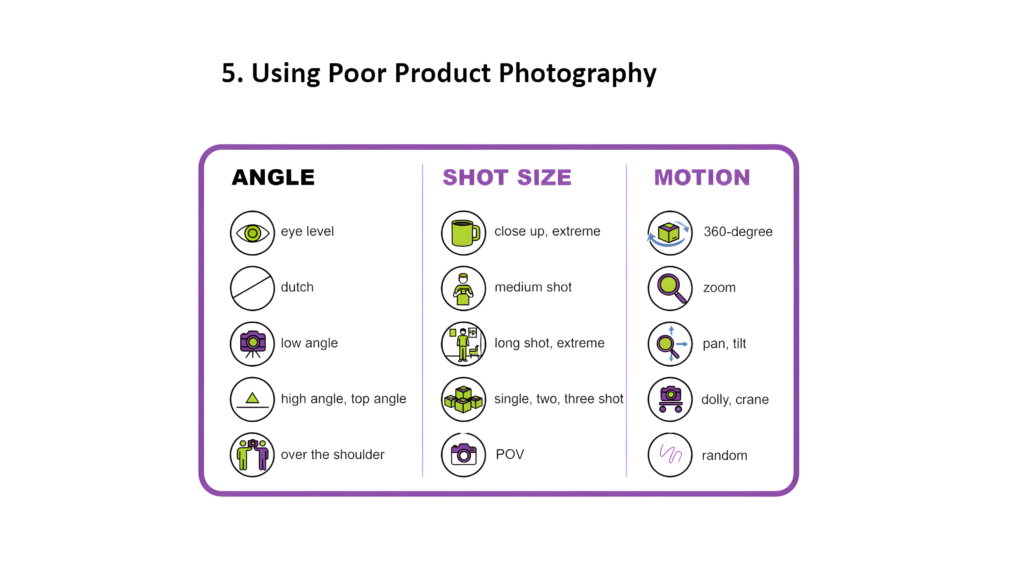
Visual elements are the lifeblood of online shopping experiences. Your conversion rates suffer, and customer trust erodes due to poor product photography. Research shows that 93% of shoppers base their buying decisions on how products look.
Online shoppers heavily depend on your images since they can’t touch or feel products before buying. They quickly lose trust if your visuals are subpar because they assume you’re hiding flaws. This explains why 22% of products get returned – they simply don’t match their photos.
The numbers tell a compelling story:
- Click-through rates drop by up to 60% with poor images
- Quality images boost sales by up to 20%
- Missing or inaccurate product images make 26% of shoppers abandon their carts
Blurry photos, mismatched backgrounds, and bad lighting make your business look amateur. Your images need to load fast on mobile devices since most Indian e-commerce happens on smartphones.
Quality product photography stands out as one of your strongest conversion tools. Professional BigCommerce SEO services include image optimization as part of a detailed strategy to avoid this pricey BigCommerce SEO mistakes. Your product images do more than decorate – they’re valuable sales assets that deserve investment.
- Lackluster Product Descriptions

Your product descriptions make or break the decision to click “Add to Cart” or leave your store empty-handed. Nearly 70% of potential buyers leave product pages when they find descriptions lacking or incomplete. This happens because online shoppers can’t touch or feel items before buying them.
Your descriptions might be failing because you:
- Copy and paste manufacturer descriptions instead of writing your own
- Use complex technical terms that leave customers confused
- Create big blocks of text without proper formatting
- Talk about features but forget the benefits
- Leave out key product details
- Make basic grammar and spelling mistakes
Bad descriptions don’t just hurt your sales today – they damage your brand’s reputation. Research shows 87% of consumers find product descriptions very important when buying online. Plus, 64% of shoppers send items back just because product descriptions didn’t match reality.
Poor descriptions hurt your search rankings, too. Search engines don’t deal very well with duplicate or thin content on product pages, which drops your visibility.
A good product description should be between 150-400 words, based on how complex your product is. Of course, it’s not about hitting a word count – you need to give shoppers the right information in an easy-to-read format that answers their questions and shows how the product helps them.
Professional BigCommerce SEO services can help you create better product descriptions and avoid this pricey BigCommerce SEO mistakes.
- Not Using Social Proof
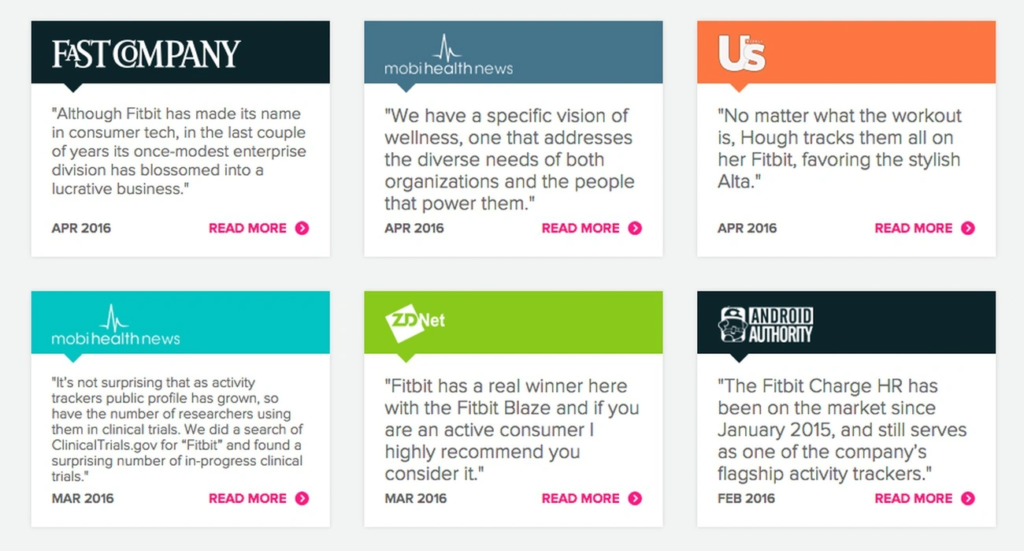
Social proof is a vital factor that many ecommerce store owners miss. Research shows 88% of people trust online reviews as much as personal recommendations. This psychological factor gives customers confidence when they can’t see products in person.
Stores without customer reviews lose a lot of sales opportunities. Products with just five reviews are 270% more likely to sell than products without reviews. The effect becomes even more powerful for premium items, where positive reviews can increase conversions by 380% compared to 190% for lower-priced products.
Bad reviews can hurt your business quickly. 94% of consumers say negative reviews stopped them from buying. But responding openly to complaints shows your dedication to customer satisfaction and often turns unhappy buyers into loyal supporters.
Common social proof mistakes include:
- Using fake testimonials that destroy trust
- Keeping old reviews that make your site look abandoned
- Not responding to negative feedback
- Focusing on getting more reviews instead of better ones
User-generated content makes your brand more personal and relatable. Authentic content helps boost engagement, keeps visitors on your site longer, and creates stronger customer relationships.
Professional BigCommerce SEO services can help you set up effective social proof strategies so you avoid this expensive BigCommerce SEO mistakes that sends potential customers elsewhere.
- Overloading Product Pages with Media

Store owners face a major challenge when they balance visual appeal with site performance. High-quality product images boost conversions, but heavy media files can substantially damage user experience and affect your bottom line.
Page load times suffer from excessive media weight. In fact, large JavaScript files, videos, high-definition images, and heavy CSS files make pages load more slowly. Research shows that for every second delay in mobile page load, conversions can drop by up to 20%.
Heavy product pages create these risks:
- Your customers get frustrated and abandon the site
- Search engines rank you lower due to poor performance
- Mobile devices show increased bounce rates
- Bandwidth usage leads to higher hosting costs
Poorly managed media files, like oversized images and unoptimized videos, make websites drastically slower. Mobile users feel this problem more acutely since speed and responsiveness determine their decision to stay or leave.
Your product pages need these optimization steps:
- Image compression without quality loss
- Responsive images that adapt to device sizes
- WebP formats that create smaller file sizes
- Lazy loading implementation that shows media only when visible
The right balance plays a significant role—insufficient images won’t showcase products well, while too many hurt performance. Professional BigCommerce SEO services help find this optimal balance. Your site can avoid this common BigCommerce SEO mistakes and maximize conversion potential.
- No Product Categories or Filters

Picture yourself walking into a store with no aisle signs or section markers. This frustrating experience happens on ecommerce websites that lack proper categorization and filtering options. A staggering 75% of online visitors abandon sites within 15 seconds because they can’t find what they need. The numbers tell us that only 10% of ecommerce stores know how to handle product categorization properly.
The damage goes beyond just lost sales. Research shows that 72% of unhappy online shoppers tell six or more people about their bad experiences. This negative word-of-mouth spreads quickly and hurts your business’s chance to grow.
The Baymard Institute discovered that 76% of sites struggle with category taxonomy. Even worse, 91% of them wrongly set up product types with shared features as separate categories instead of filters. This excessive categorization makes it hard for users to browse the site.
Filtering comes with its own set of challenges. Only 16% of major ecommerce sites offer decent filtering options, which is surprising given how important they are. About 42% of these sites fail to add category-specific filter types for their main product sections.
Here’s how you can avoid these mistakes:
- Break down categories into manageable chunks (around 10 options works best)
- Set up shared features as filters instead of separate categories
- Add filters that make sense for each type of product
A good BigCommerce SEO company can help you create proper taxonomies that boost user experience and avoid these BigCommerce SEO mistakes that get pricey. Without these basic navigation elements, your customers are shopping in the dark.
- Missing Contact and Service Info
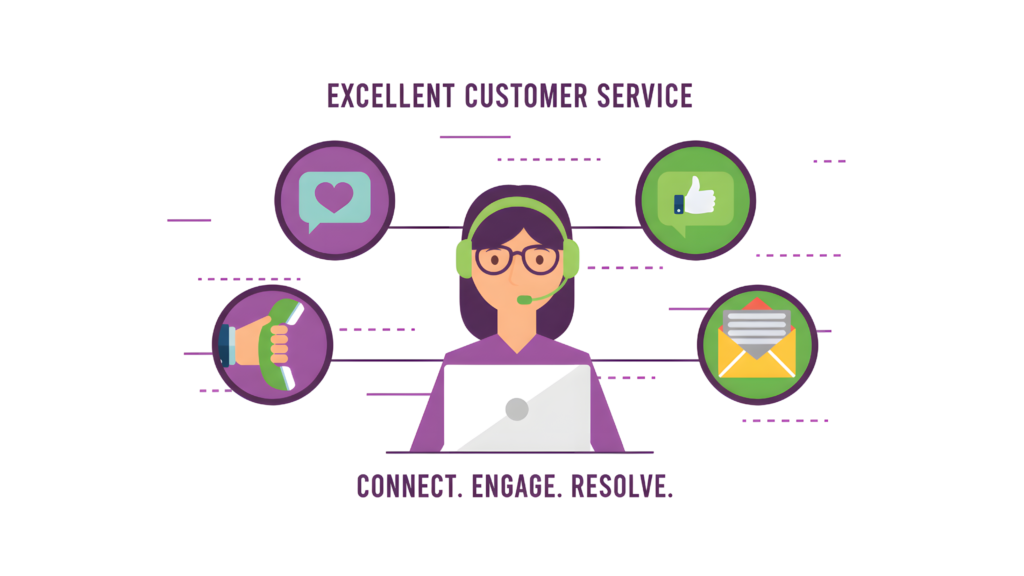
Your business loses customers when contact information stays hidden. Research shows that 44% of website visitors will leave within seconds if they can’t find your contact details. This mistake erodes trust and sends potential buyers straight to your competitors.
Picture this: would you buy from a business you can’t reach? Customers doubt your legitimacy when contact details are missing or hard to find. This happens because online shoppers miss the personal connection they get in physical stores.
Here’s something businesses often miss – a simple unanswered question might be the only thing standing between you and a sale. Many ecommerce stores make customers work too hard to get support. This creates friction that damages trust, hurts sales, and kills customer loyalty.
Your contact page needs these elements:
- Email address (most consumers prefer this)
- Phone number that shows its purpose
- Physical location with a map where relevant
- Business hours
- Expected response times
- Links to active social media accounts
Note that approachable businesses build trust with shoppers. Available contact information does more than turn prospects into customers – it helps unhappy customers become brand advocates.
Professional BigCommerce SEO services include contact page optimization to prevent this common BigCommerce SEO mistakes. A well-laid-out contact system goes beyond answering questions – it shows customers that their feedback matters.
- Poor Site Navigation
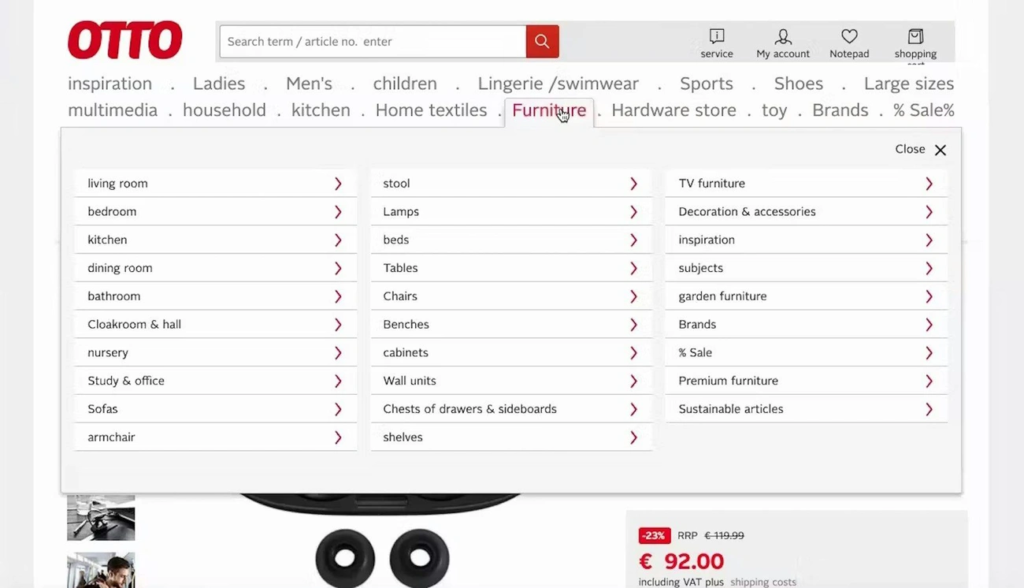
Poor navigation quietly destroys your conversion rates. Research shows that 76% of ecommerce websites don’t deal very well with navigation. This hidden barrier drives potential customers away. Sites lose up to 55% of visitors because their navigation structures confuse users.
Your website’s first impression matters. Research suggests 38% of consumers look at navigation links and layout right away. Notwithstanding that, standard navigation structures help only 50% of users find what they need. This gap explains why many visitors leave websites immediately.
Common navigation mistakes include:
- Overwhelming menus with too many options (cognitive overload)
- Hidden navigation (like hamburger menus that 48% of users over 45 don’t recognize)
- Inconsistent navigation across devices
- Confusing or unfamiliar icon designs
- Missing indicators of user’s current location on your site
Bad navigation hurts more than just user experience. Your site’s search engine rankings suffer too. Your homepage passes authority to interior pages. Too many links dilute this authority and make product pages rank poorly.
In stark comparison to this, even small changes make a big difference. Some businesses increased their conversion rates by 10% just by reorganizing login and registration boxes.
Professional BigCommerce SEO services solve these navigation challenges by creating user-friendly paths that lead visitors to convert instead of leaving confused.
- No Guest Checkout Option

Making customers create accounts before buying drives away nearly 26% of shoppers. This extra step adds friction when customers are ready to make a purchase.
Here’s a common situation: A new visitor finds the perfect product but leaves their cart when they see they have to register first. This explains why forced registration is the second biggest reason people abandon their checkout.
Guest checkout plays a vital role because it aligns with customers’ priorities for quick, smooth transactions. New visitors usually want to try the guest checkout option before they commit to your business.
Guest checkout boosts conversion rates but comes with some trade-offs:
- You collect less customer data
- Your marketing options become limited without customer profiles
- You can’t send cart abandonment reminders easily
- Tracking customer history and priorities becomes challenging
You can balance these concerns in several ways. Let customers create accounts after purchase, add social login options, or keep registration simple with just an email. This helps you maintain high conversions while gathering valuable customer data.
Professional BigCommerce SEO services can help you set up the best checkout strategies and avoid this costly BigCommerce SEO mistakes that quietly drives potential customers away.
- Copying Competitor Content

Stealing competitor content creates more than ethical issues—it’s a legal minefield. Your business risks copyright infringement claims that can get pricey and damage your brand’s integrity when you copy another store’s website content. This shortcut impacts your business in several ways.
Search engines penalize duplicate content heavily. Original creators continue to rank while sites with copied material get filtered out of search results. Copying also strips away your brand’s unique qualities. Marketing legend David Ogilvy warned against “bunting” in business by settling for imitation.
Copying leads to these critical issues:
- Customers become confused about whether you’re the same company
- You lose authority and remain stuck in your competitors’ shadows
- Your business faces trademark disputes and legal actions
- Your content fails to resonate with your target audience’s needs
You need to be careful even when analyzing competitors’ strategies. Studying their approach provides value, but your content must stay original. Google has no reason to show your page if similar content already exists. Effective competitor analysis focuses on creating unique content rather than copying ideas.
Professional BigCommerce SEO services help create unique content strategies that separate your store from others while avoiding this costly BigCommerce SEO mistakes. Original content builds a stronger brand identity and customer loyalty over time.
- Not Using Analytics to Improve Marketing

Your ecommerce marketing without analytics resembles driving with a blindfold. Businesses operating on guesswork alone miss vital opportunities to connect with customers. Resources get wasted on strategies that underperform.
Analytics acts as your marketing compass and shows which channels bring the most traffic and conversions. You can optimize your marketing budget by investing more in successful channels while reducing spend on ineffective ones. Companies that exploit analytical strategies make decisions five times faster than their competitors in today’s digital world.
Common analytics mistakes include:
- Too many metrics tracked instead of KPIs that match business goals
- No action taken on collected insights
- Excessive reliance on last-click attribution models that fail to evaluate campaigns fully
Analytics helps segment your customer base through demographics, buying patterns and engagement metrics. Customer groups receive targeted campaigns and customized messages based on this segmentation.
Data quality issues affect 77% of organizations and limit their analytical marketing strategies. RankFast’s PPC for ecommerce services can help change your marketing approach through expert data analysis.
- Limited Payment Options
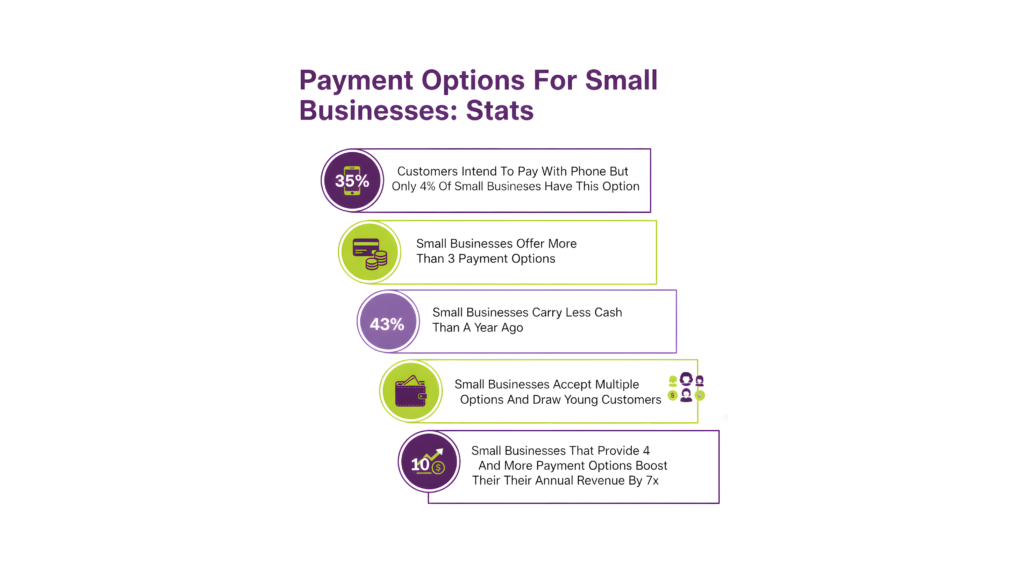
Your bottom line takes a direct hit when you offer limited payment options. Cart abandonment stats reveal that 13% of lost transactions happen because customers can’t find their preferred payment method. A typical e-commerce site making £85,000 monthly loses £11,050 each month, which adds up to £130,000 yearly losses.
Payment diversity brings clear advantages. Adding just one more relevant payment option beyond cards boosts revenue by 12% on average and lifts conversion rates by 7.4%. Customer priorities show striking differences across markets:
- BLIK accounts for 70% of ecommerce in Poland
- Alipay and WeChat Pay represent 90% of all mobile payments in China
- In India, 83% of customers prefer cash on delivery
Restricting payment options does more than hurt sales – it damages your brand’s reputation. Your customers expect payment flexibility, and a credit-card-only approach suggests you don’t understand their needs.
Most customers stick to 1-2 favorite payment methods and ignore the rest. Market data shows that including the top three local payment options can boost your conversions up to 30%.
Professional BigCommerce SEO services help set up the right payment options, preventing this BigCommerce SEO mistakes that quietly pushes potential buyers away.
- Lack of Shipping Options
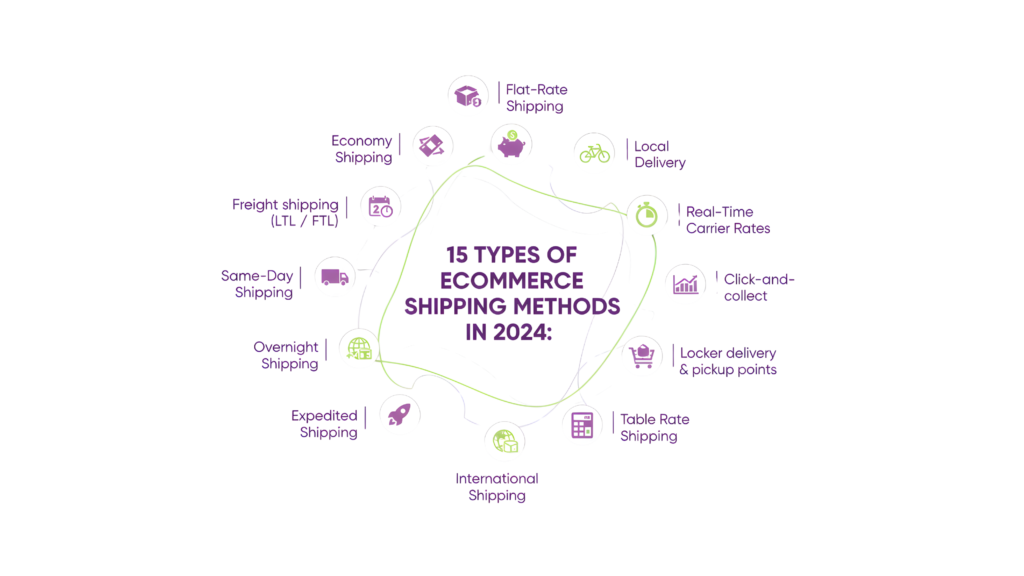
High shipping costs and limited delivery options chase away potential buyers at an alarming rate. Research shows 48% of customers abandon their shopping carts due to expensive shipping costs, which leads to significant revenue losses. Across markets, 50% of shoppers admit to abandoning carts when shipping choices don’t match their expectations.
The data paints a clear picture. 86% of retailers reported increased sales after they added more delivery choices at checkout. Whatever your product’s quality, 95% of consumers will shop elsewhere if they can’t get their preferred shipping method.
Here’s what happens when you limit shipping options:
- You lose your edge in the global marketplace
- Customer satisfaction drops and affects loyalty
- Cart abandonment rates spike (48% from unexpected shipping costs)
- You miss chances to boost average order value
Free shipping has become a must-have feature as 66% of consumers expect it for online purchases. The situation gets worse when 36% abandon carts due to slow shipping. Your shipping approach directly affects your revenue.
A professional BigCommerce SEO company can help you create shipping options that keep customers happy without hurting your profits. Avoiding this common BigCommerce SEO mistakes will boost your conversion rates beyond typical platform improvements.
Comparison Table
| BigCommerce SEO mistakes | Key Statistics | Main Consequences | Recommended Solutions |
| Not Doing Market Research | 90% of ecommerce startups fail | • Missed market opportunities• Products don’t match market needs• Wrong pricing approaches | • Get a full picture of the market• Look at economic indicators• Research location-based targeting |
| Not Knowing the Target Audience | 68% want customized experiences98% of visitors leave without buying | • Marketing that doesn’t work• Money poorly spent• Low conversion numbers | • Split audience into groups• Create tailored experiences• Match audience needs |
| Wrong Product Pricing | 60% of shoppers say price matters most | • Lost sales• Brand reputation damage• Lower profits | • Use analytical insights for pricing• Look at competitor prices• Create flexible pricing plans |
| Wrong Platform Choice | Not specified in this piece | • Growth limitations• Surprise costs• System conflicts | • Look at total costs• Test system compatibility• Check growth options |
| Weak Website Security | 87% stop shopping after security issues32.4% of attacks hit ecommerce | • Money losses• Customer trust gone• Legal issues | • Build strong security systems• Regular security checks• Watch compliance rules |
| Making Custom CMS | Development costs start at ₹2,531,413 | • Big development bills• Long wait times• Never-ending upkeep costs | • Pick proven platforms• Check existing options• See what can be customized |
| Bad Product Photos | 93% say visuals matter when buying | • 60% fewer clicks• 22% returns• Sales drop | • Get professional photos• Make images mobile-ready• Keep photo style same |
| Weak Product Descriptions | 70% leave when descriptions are poor | • Fewer sales• More returns• Bad search rankings | • Write fresh content• Show what’s good• List key details |
| Missing Social Proof | 88% trust online reviews like friend advice | • Trust issues• Sales drop• Less credibility | • Show customer reviews• Handle bad feedback• Share real testimonials |
| Crowded Product Pages | 20% sales drop per second delay | • Pages load slow• People leave fast• Mobile users struggle | • Make files smaller• Load content smartly• Shrink images right |
| No Product Sorting Options | 75% leave within 15 seconds | • Users get frustrated• Sales lost• Angry customers | • Make clear groups• Add useful filters• Sort things logically |
| Hidden Contact Details | 44% leave if they can’t find contact info | • Trust drops• Sales suffer• Customer anger | • Show contact info clearly• Give multiple ways to connect• List when you’re open |
| Hard-to-Use Site | 76% have basic navigation55% visitors get lost | • Quick exits• Lost sales• Frustrated users | • Make navigation easy• Work well on phones• Use clear menu names |
| Forced Registration | 26% quit when forced to register | • Lost sales• Cart abandonment• Unhappy customers | • Let guests check out• Make sign-up easy• Ask for account after purchase |
| Stolen Competitor Content | Not specified in this piece | • Legal trouble• Search ranking drops• Brand damage | • Make original content• Create your own plans• Build unique identity |
| Ignoring Analytics | 77% struggle with data quality | • Marketing fails• Resources wasted• Chances missed | • Watch key numbers• Use data to decide• Check results often |
| Few Payment Options | 13% leave due to limited payments | • Sales drop• Lower conversions• Frustrated buyers | • Add more payment ways• Match local needs• Keep payment systems current |
| Limited Shipping Choices | 63% quit over shipping costs | • Empty carts• Lost edge over rivals• Unhappy customers | • Give shipping choices• Think about free shipping• Show shipping details upfront |
Conclusion
A review of your ecommerce strategy against 18 BigCommerce SEO mistakes could reveal why your online store misses potential sales. Poor product photography, inadequate market research, and unclear target audience definition directly affect your revenue. These oversights create friction that drives away buyers before purchase completion.
The average cart abandonment rate stands at 70% across ecommerce sites – a clear warning sign. Your store needs to fix these basic problems to stay competitive in today’s digital world. While some solutions need bigger investments, even minor changes can boost sales substantially.
Want to boost your ecommerce performance? RankFast offers comprehensive SEO strategies and effective PPC campaigns built specifically for ecommerce businesses like yours. We can help with specific improvements or complete store overhauls, turning common mistakes into growth opportunities.
FAQs
Q1. What are some common ecommerce mistakes that can hurt sales?
Some common mistakes include poor product photography, lackluster product descriptions, limited payment and shipping options, and not using analytics to improve marketing. These issues can lead to abandoned carts and lost sales.
Q2. How important is market research for an ecommerce business?
Market research is crucial for ecommerce success. Without it, businesses risk misaligning their product offerings, using ineffective pricing strategies, and missing key market opportunities. Thorough research helps understand customer needs and the competitive landscape.
Q3. Why is defining a target audience essential for online stores?
Defining a target audience allows for more effective marketing, personalized experiences, and better resource allocation. It helps tailor products and messaging to specific customer needs, improving conversion rates and customer satisfaction.
Q4. How does website security impact an ecommerce business?
Website security is critical for ecommerce. Lack of proper security measures can lead to financial losses, damaged customer trust, and legal complications. Implementing robust security protocols is essential for protecting both the business and its customers.
Q5. What role does social proof play in ecommerce success?
Social proof, such as customer reviews and testimonials, is highly influential in ecommerce. It builds trust, increases credibility, and can significantly boost conversions. Neglecting social proof can lead to lost sales and reduced customer confidence in your brand.
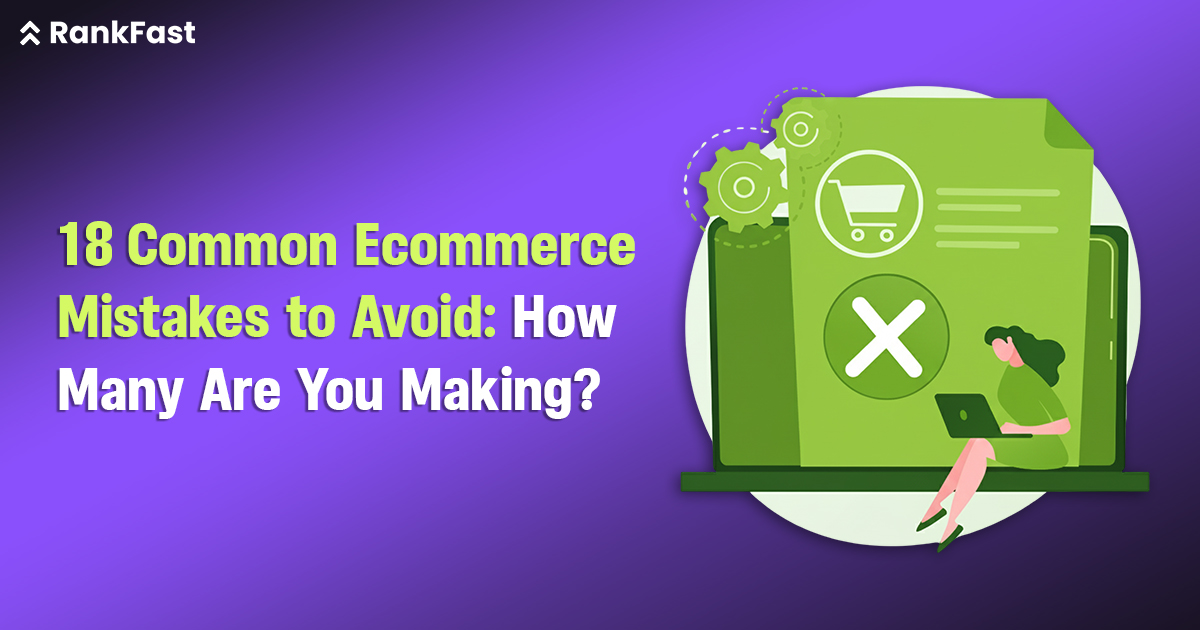
Leave a Reply